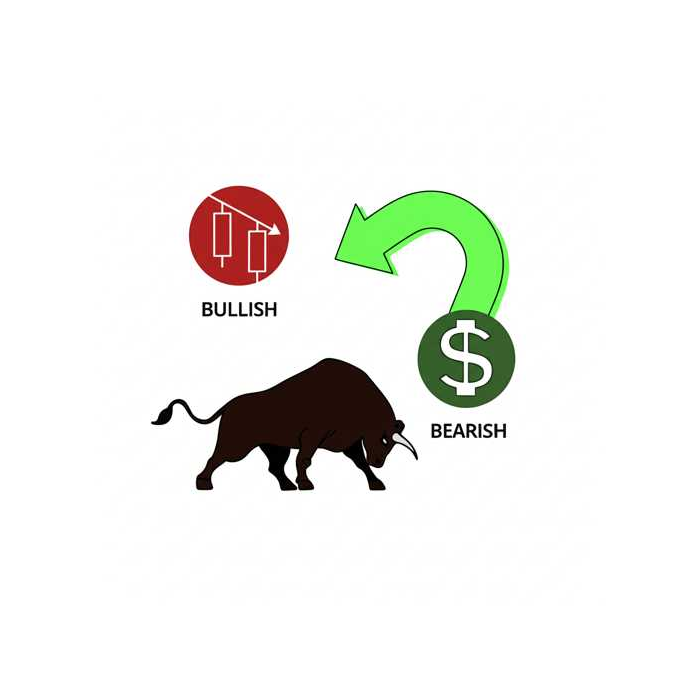Are You a Bull or a Bear? Understanding Bullish and Bearish Sentiments in Trading
In the vibrant world of financial markets, terms like "bullish" and "bearish" are thrown around constantly. They don't refer to actual animals roaming the trading floor, but rather to the outlook and actions of market participants regarding the direction of prices. Understanding these two opposing forces is crucial for any trader or investor.
Let's dissect what it means to be bullish or bearish.

The Bullish Outlook: Charging Ahead!
Imagine a bull attacking its opponent by thrusting its horns upwards. This upward motion is the perfect metaphor for a bullish sentiment.
- Definition: To be "bullish" means that you are optimistic about the future price of an asset, a sector, or the overall market. You expect prices to rise.
- Action: A bullish trader will typically buy an asset (go "long") with the expectation that its price will increase, allowing them to sell it later for a profit.
- Characteristics of a Bull Market: When the overall market (like a stock index or a particular currency pair) is experiencing a sustained period of rising prices, it's called a bull market. This is often characterized by:
- Optimism and Confidence: Investors are generally confident about economic growth and corporate earnings.
- Increased Demand: More buyers than sellers, driving prices higher.
- Economic Growth: Often coincides with strong GDP growth, low unemployment, and rising corporate profits.
- "Buy the Dip" Mentality: Traders tend to view temporary price pullbacks as opportunities to buy more.
- Why it Matters: If you are bullish on an asset, your strategy will generally involve buying and holding, or seeking opportunities to enter long positions.
The Bearish Outlook: Swiping Down!
Now, picture a bear attacking by swiping its paws downwards. This downward motion represents a bearish sentiment.
- Definition: To be "bearish" means that you are pessimistic about the future price of an asset, a sector, or the overall market. You expect prices to fall.
- Action: A bearish trader might sell an asset they own, or more commonly, short-sell an asset (go "short") with the expectation that its price will decrease. Short-selling involves borrowing an asset, selling it, and then buying it back at a lower price to return to the lender, profiting from the decline.
- Characteristics of a Bear Market: When the overall market is experiencing a sustained period of declining prices, it's called a bear market. This is often characterized by:
- Pessimism and Fear: Investors are concerned about economic slowdowns, geopolitical instability, or declining corporate profits.
- Increased Supply: More sellers than buyers, driving prices lower.
- Economic Contraction: Can coincide with rising unemployment, decreasing consumer spending, and declining GDP.
- Flight to Safety: Investors may move their capital to less risky assets like bonds or gold.
- Why it Matters: If you are bearish on an asset, your strategy will generally involve selling existing holdings, or seeking opportunities to enter short positions to profit from the decline.
Bull vs. Bear: The Constant Tug-of-War
The financial markets are essentially a continuous battle between bullish and bearish forces. Price movements are a reflection of which sentiment is currently dominating.
- Market Cycles: Markets often move in cycles, shifting between periods of bullishness and bearishness. A prolonged bull market will eventually give way to a bear market, and vice versa.
- Individual vs. Market: You can be "bullish" on a specific stock even if the overall market is "bearish," or vice versa. It's about your specific outlook on a particular asset.
- Adaptation is Key: Successful traders and investors understand that markets are dynamic. Being able to identify whether the prevailing sentiment is bullish or bearish allows them to adapt their strategies and position themselves accordingly.
Where Do These Terms Come From?
While the exact origins are debated, the most popular theory links these terms to how the animals attack: the bull thrusts upwards, the bear swipes downwards. Another theory for "bear" comes from the old saying "selling the bearskin before one has caught the bear," referring to speculative selling. The "bull" then emerged as an opposing term.
Regardless of their precise etymology, "bullish" and "bearish" are now ingrained in the financial lexicon. By grasping these fundamental concepts, you'll be better equipped to interpret market news, analyze price movements, and, most importantly, make informed trading decisions. Are you seeing the bulls charge, or the bears take hold? Your answer will shape your next move.
Popular Tags